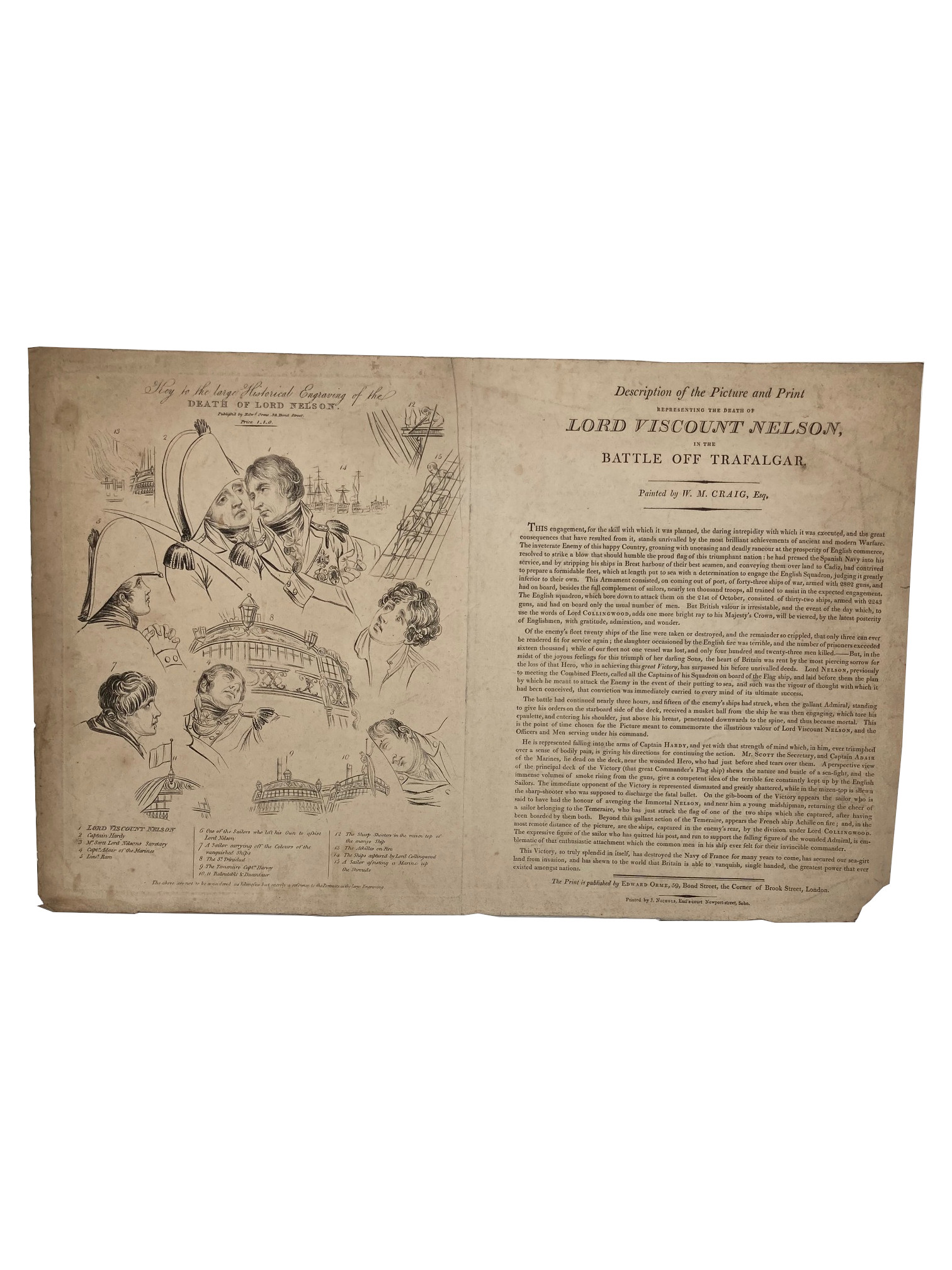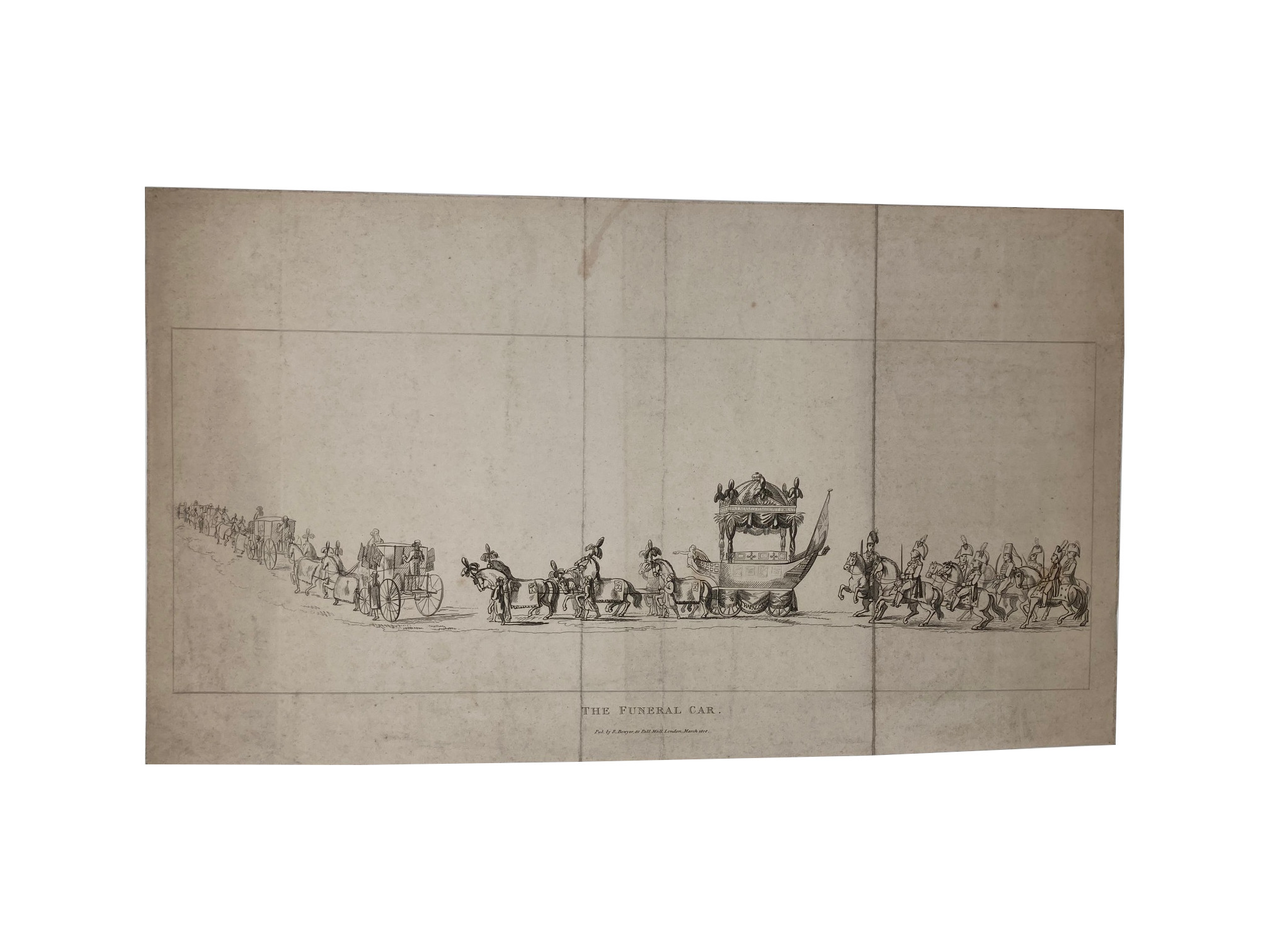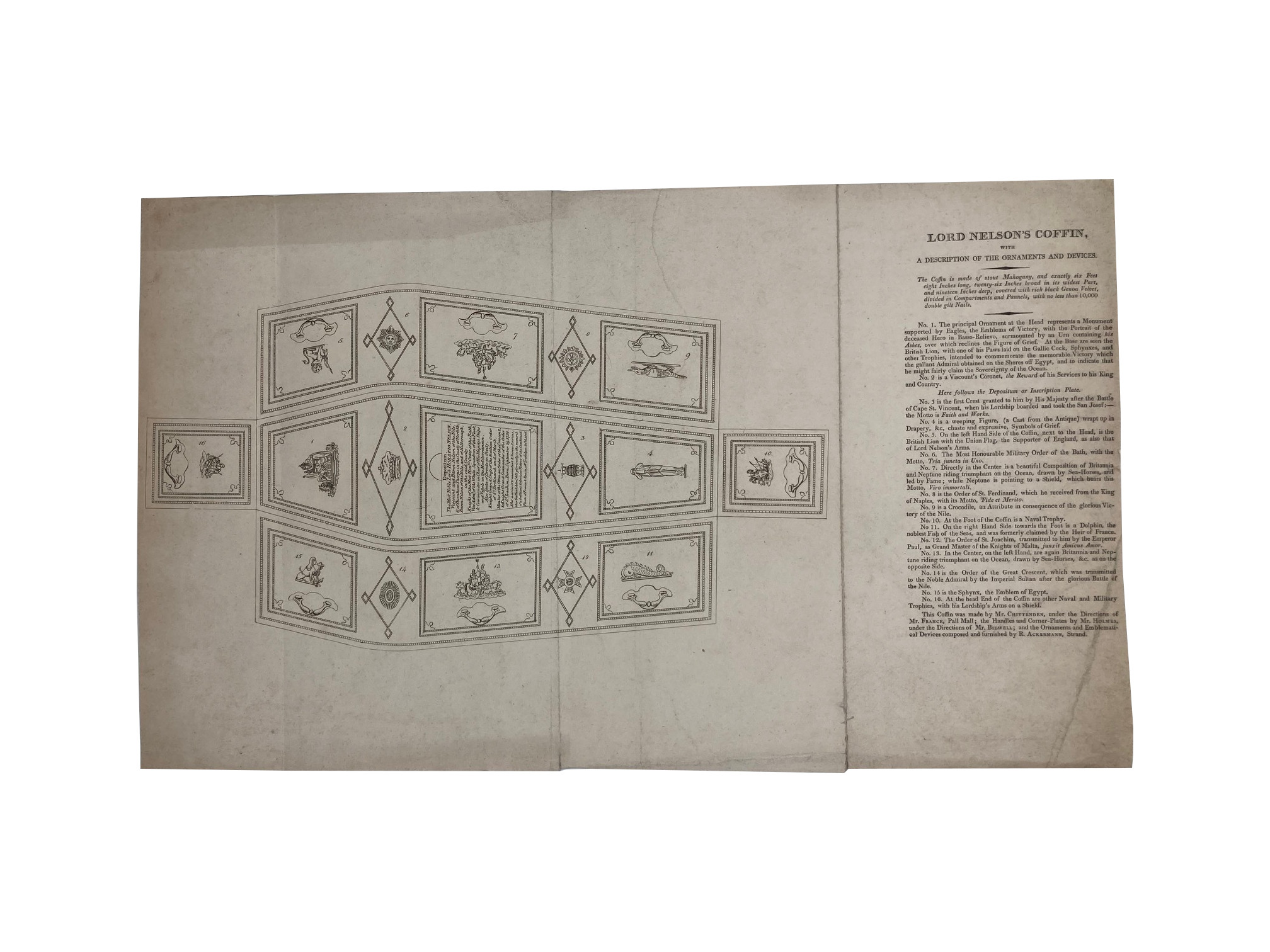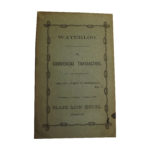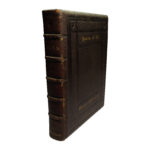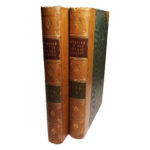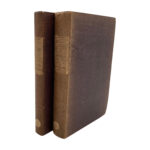Description
[004154] [Lord Viscount Nelson] Description of the Picture and Print Representing the Death of Lord Viscount Nelson, in the Battle Off Trafalgar WITH The Funeral Car WITH Lord Nelson’s Coffin, with a Description of the Ornaments and Devices. ill. Craig, W. M.. London: Edward Orme and J. Nichols, 1806. First Edition. 4to (Oblong). Unbound. Print. Good. Three items relating to the death and funeral of Nelson
1. Description of the Picture and Print Representing the Death of Lord Viscount Nelson, in the Battle Off Trafalgar, published by Edward Orme, and printed by J. Nichols, n.d. but probably c.1806, broadside, approximately 470mm x 295mm in size. Lightly browned and soiled, central crease from fold, chipped to edges, loss to bottom right hand corner, not affecting text, red ink staining to reverse, but without bleed through. A key with description, to the picture painted by William Marshall Craig, and Orme’s engraving of it, of the death of Nelson aboard the ‘Victory’
2. The Funeral Car, engraved image, approximately 480mm x 280mm in size, published by R. Bowyer, 1808. Lightly soiled, creased from folds, otherwise fairly clean. Central image is of the funeral car, with elements of the funeral train
3. Lord Nelson’s Coffin, with A Description of the Ornaments and Devices, no publisher, no date, c.1806?, approximately 505mm x 300mm in size, engraved image of Nelson’s coffin, with descriptive text. Lightly browned and creased, closed tear to one fold. Possibly a pirated version of Ackermann’s coloured print of Nelson’s coffin, which had the text beneath the image, or perhaps just an uncoloured variant
Nelson’s funeral was an extraordinary display, his “corpse was laid in a coffin made from the mast of a ship he had captured at Aboukir … The coffin was then displayed in state at the Royal Hospital, Greenwich, where more than 30,000 people came to pay their respects during three days … In the final funeral procession, ten thousand soldiers consisting chiefly of the regiments that … had like the deceased Admiral exerted themselves to deliver the world from the tyrannic ambition of the infidel power of France, preceded the hero to his tomb … The streets, lined by twenty thousand volunteers, had been specially covered with a layer of gravel during the night. After the military section of the procession came 48 seamen and marines of HMS Victory … together with 48 pensioners of Greenwich Hospital. Next followed the private carriages of commoners and peers and then the royal family, including the Prince of Wales. The flag of the Victory, ‘torn by the innumerable balls that had passed through it in the fury of the battle’, and ‘stained with the blood of its intrepid crew’, aroused much interest in the procession. At the rear came the naval section, preceded by heralds bearing swords, spurs and other traditional accoutrements. The funeral chariot carrying the body had ‘an elevated canopy with plumes, supported by four columns resembling palm trees, and having in its front and back a carved representation of the head and stern of HMS the Victory'” (Gittings, Death, Burial and the Individual in Early Modern England, pages 232-233)
